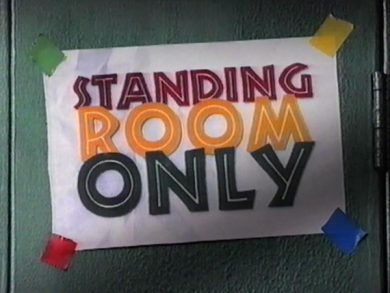If you had a culture of occupancy what kind of impact would that have on your community?
Immanuel Communities is a faith based senior living provider in Omaha, Nebraska, that provides Independent, Assisted, Memory Support and Skilled Nursing Care. In addition, they provide a number of home based services and low income housing.
The Challenge
In a period of four to five years Immanuel grew from 1 community to 7. While they knew they had great communities and a great team, operationally they had not quite kept up with the physical growth. Inspired by the book “From Good to Great”, by Jim Collins, they began their own Good to Great journey. The biggest and most immediate challenge the faced was occupancy. They wanted to be at 98% but struggled to stay in the 86%-87% range. Immanuel explored working with consultants to help them make the Good to Great transition. They saw limited results until finally meeting William Nowell and hiring ValueMatch™ to help them make the leap to great.
A Tipping Point
An elderly lady and her daughter had been exploring various independent living/senior living options over a period of weeks. Knowing the time had come to make a decision, the lady and her adult daughter planned a day long marathon to visit six different senior living communities. At the end of the day, they promised themselves, they would make a final move-in decision. The Immanuel community they visited was the last of the day and, when they walked through the door, it was clear that both were nearly exhausted. Immediately the sales counselor offered the weary prospects some hot coffee and cookies, which were accepted and enjoyed.
As the sales consultant was working through the ValueMatch™ discovery process, which included asking thoughtful questions and patiently listening to the answers, the prospect stopped the process with this comment: “I can’t believe you are asking me how I feel and actually listening to me. At every other place I visited they only talked to my daughter, even though I am the one who is planning to make the move.”
By the time the initial visit was done, it was 6 pm and the sales consultant asked if they would like to have dinner, giving them a chance to visit with some of the residents and experience the food options. The bottom line was that, before they left that evening, they had committed to an apartment and had started the process of making the Immanuel community their new home.
The Lessons
The ValueMatch™ system is predicated on the idea that building intimate relationships with prospects is key to successful senior living sales. This means going against the natural tendency that sales people have of doing lots of telling and selling. This process is all about figuring out what the prospect needs; what they like; and what they really value and care about.
The process helps the sales consultant understand the underlying emotional triggers that caused the prospect to go looking for senior living in the first place. The reason Roxanne Myers, the VP of Sales for Immanuel, is so passionate about the ValueMatch™ system is that it creates a disciplined approach to the discovery process and that, by following this process, the prospects rapidly get involved in the process and realize they are a good fit.
This helps them feel more comfortable with making the ultimate decision to move and become part of the community.
The Last Chapter
It took 18 months to fully implement this new Culture of Occupancy. The pay off has been significant. Immanuel has since maintained a 98% occupancy in all seven communities, every year for the last six, without missing a beat. This makes it one of the most successful companies in the industry. Steve Moran
If you like this article (or even if you don’t) it would be a great honor to have you subscribe to our mailing list HERE.









Basis for the question I am about to pose: I am a resident of a CCRC. My working career was in Human Resources.
I have been on the receiving end of the Marketing treatment to “sign on and move in.” I have seen incentives come and go. This sort of reminds me of the recruitment and employment functions of a corporate Human Resource Department, only rather than the goal of attracting and retaining good employees, a CCRC’s effort is for attracting residents. (The jury is still out on the “retaining” piece.) New residents are needed to fill empty spaces (and to provide the $$$’s for the refund of the exiting resident, if it’s a refund community). There is natural attrition due to death, but in my mind there is unfortunate turnover because the community failed to measure up.
In the corporate world Human Resources conducts “Exit Interviews” of those employees who resign. This is an effort to find out what motivated the employee to seek other employment, how s/he felt about the work there at the company, how s/he felt about the working relationships and supervision received.
As a resident in CCRC with a Type C contract, I’ve seen people in independent living exit, and not because of death or a move to Health Care. But even if a move to Health Care is necessary, because we are Type C, there is not a huge motivation to use the AL, SNF, or Memory Care on campus. I’ve seen residents choose to go elsewhere for their (or their spouses’) move to AL or the SNF. The resident grapevine (which some studies have shown to have a high level of accuracy) indicates several reasons: “The AL apartments are too small here, so I put my husband in XYZ place across town.” “The food is lousy in the SNF, so her niece moved her to XYZ Place.” “I need to live closer to my daughter.” “Marketing told me (fill in the blank) about life here, and it turned out not to be accurate.” “I was told some missing amenities would come onto campus ‘next year’ by Marketing, but it’s now been three years.” An interesting variety of reasons.
I wonder if CCRCs conduct Exit Interviews in an effort to improve. To find out the reasons for the decisions made to leave independent living or NOT choose the Health Care facilities on campus.
I don’t think these “exit interviews” are done. It doesn’t have to be the resident, but maybe the adult child who is the strong decision-maker. Maybe Exit Interviews are done at some CCRCs. I think it would help.
Excellent article, Steve! While today’s technologies are essential for building awareness and keeping you in the game, winning at the game is still about empathy, rapport, listening, understanding, responding, honesty and trust. Healthcare and senior living are still very personal issues and basic marketing truths still apply, e.g. “Know thy customer.”
Back in the day, one of my professors at the Wharton School, Scott Armstrong, had a very simple, but still valid definition of marketing. He used to say, “Marketing is very simply the engineering of customer satisfaction.” Even in today’s hectic e-commerce world, it’s still all about knowing our customers and responding with what they really need.